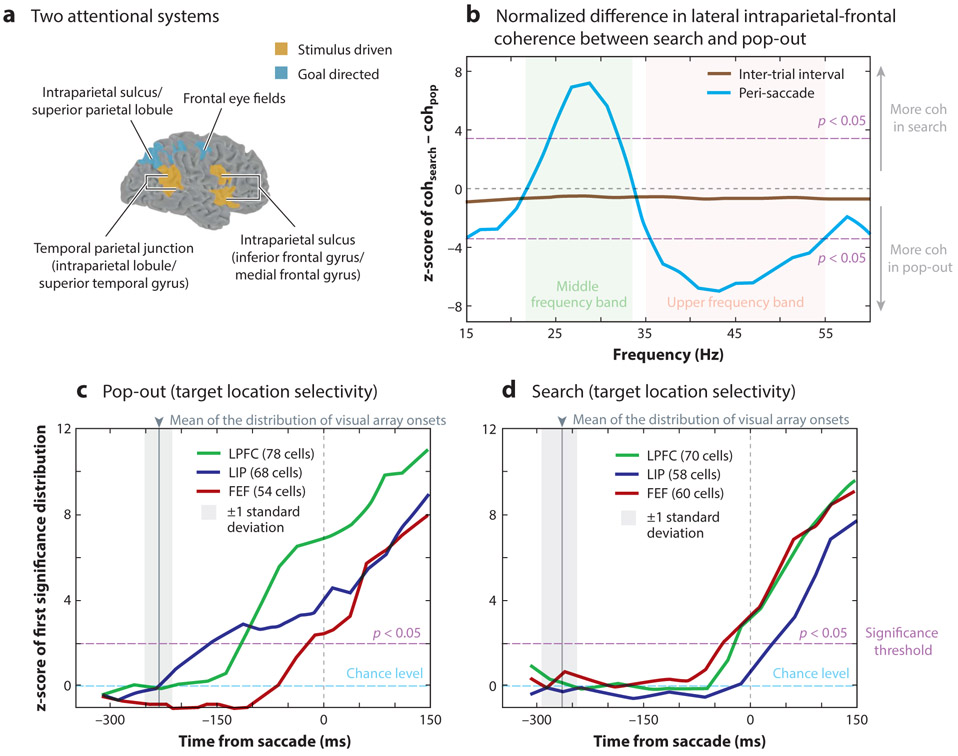Figure 3.
Attentional response modulation based on goal-directed and stimulus-driven context. (a) Some neuroimaging studies in humans have provided evidence of overlapping networks for directing either stimulus-driven (orange) or goal-directed (blue) attention. Panel adapted with permission from Corbetta & Shulman (2002). (b,c,d) Electrophysiological recordings in monkeys have provided evidence that the temporal dynamics of interactions between higher-order cortical hubs of the attention network shift between stimulus-driven (i.e., pop-out search) and goal-directed (i.e., serial search) attention. (b) Prior to a saccadic eye movement (i.e., peri-saccade), coherence (coh), a measure of functional connectivity, is stronger at higher frequencies during stimulus-driven attention and stronger at lower frequencies during goal-directed attention. In addition, attentional control shifts from the LIP during stimulus-driven attention to the FEF during goal-directed attention. Panel adapted with permission from Buschman & Miller (2007). The target location is first signaled (c) by LIP during a pop-out search and (d) by FEF during a serial search. Abbreviations: FEF, frontal eye fields; LIP, lateral intraparietal area; LPFC, lateral prefrontal cortex.

